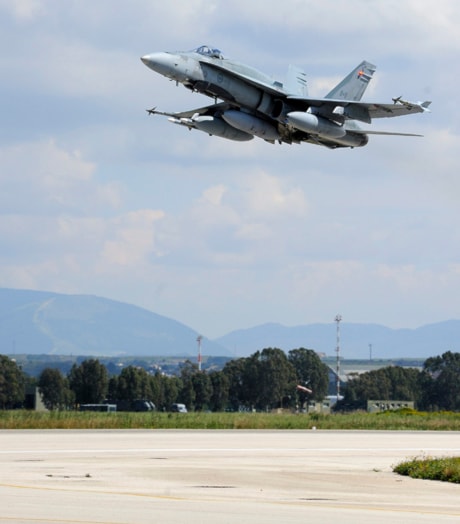WASHINGTON — International forces intend to extend a no-fly zone to the Libyan capital of Tripoli, hundreds of miles distant from the area of recent fighting between forces loyal to Moammar Gadhafi and the rebels seeking to topple him, the U.S. commander in the region said Monday.
Gen. Carter Ham also said the American role in a three-day old air assault to degrade Libya’s military capability already had begun to decline, with the overwhelming share of Monday’s missions flown by pilots from other countries in the coalition.
Ham spoke to reporters at a news conference a few hours before President Barack Obama said the United States would turn over leadership of the military operation to other, unnamed countries within a “matter of days, not weeks.” Speaking at a news conference in Santiago, Chile, the president declined to be more specific.
He said the United States favours Gadhafi’s ouster but the international military effort has a more limited goal of establishing a no-fly zone over Libya and protecting civilians against massacre by forces loyal to the longtime ruler.
Ham said that campaign already has shown results.
“With the growing capabilities of the coalition, I anticipate the no-fly zone will soon extend to Brega, Misurata, and then to Tripoli,” he told Pentagon reporters in a video conference from his headquarters in Germany.
He said that zone would cover “about 1,000 kilometres (620 miles), so it’s a pretty wide area.” Benghazi, which the rebels control and Gadhafi’s forces sought to capture last week, is about 400 miles (645 kilometres) from Tripoli.
In the midday news conference, Ham said that over the previous 24 hours, U.S. and British forces launched 12 Tomahawk missiles, targeting command-and-control facilities, a missile facility and an air defence site that had previously been attacked.
The strikes followed a weekend of punishing air attacks aimed at preventing Gadhafi’s forces from killing civilians seeking his ouster.
“Air attacks have succeeded in stopping regime ground forces from advancing to Benghazi, and we are now seeing ground forces moving southward from Benghazi,” Ham said. “Through a variety of reports, we know that regime ground forces that were in the vicinity of Benghazi now possess little will or capability to resume offensive operations.”
Ham said he has little indication of the whereabouts of Gadhafi, and that locating or attacking him is not a mission of the coalition military forces. He said, however, that the possibility of Gadhafi using surrogates to launch a terrorist attack on the U.S. or Europe is “a very, very legitimate concern.”
He said the United States already is taking a smaller role in the mission. Whereas about 50 per cent of the approximately 60 air missions flown on Sunday were by U.S. pilots, the “overwhelming” share were by non-U.S. pilots on Monday, he said.
